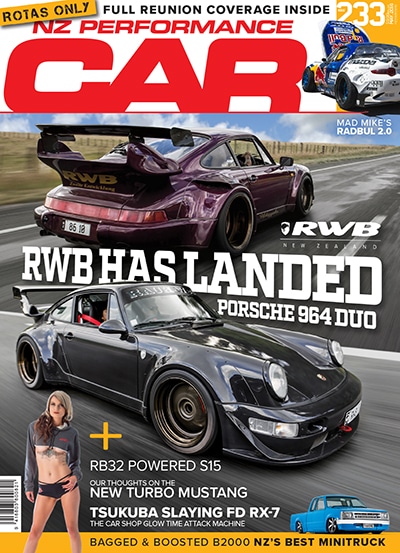data-animation-override>
“The Car Shop Glow FD3S RX-7 is a privateer machine doing great things around Tsukuba Circuit. How great? Try 56-second lap times!”

The humble Wankel engine has a special place in Japan’s heart, and, for many Japanese, once you have owned one, there is just no going back. “All it took was one little taste, and I was hooked,” is how Yukimitsu Hara, owner of Car Shop Glow, described his first run-in with a rotary. Since then, he has been developing and radically shaking up his own RX-7, and the current result is downright perfect.
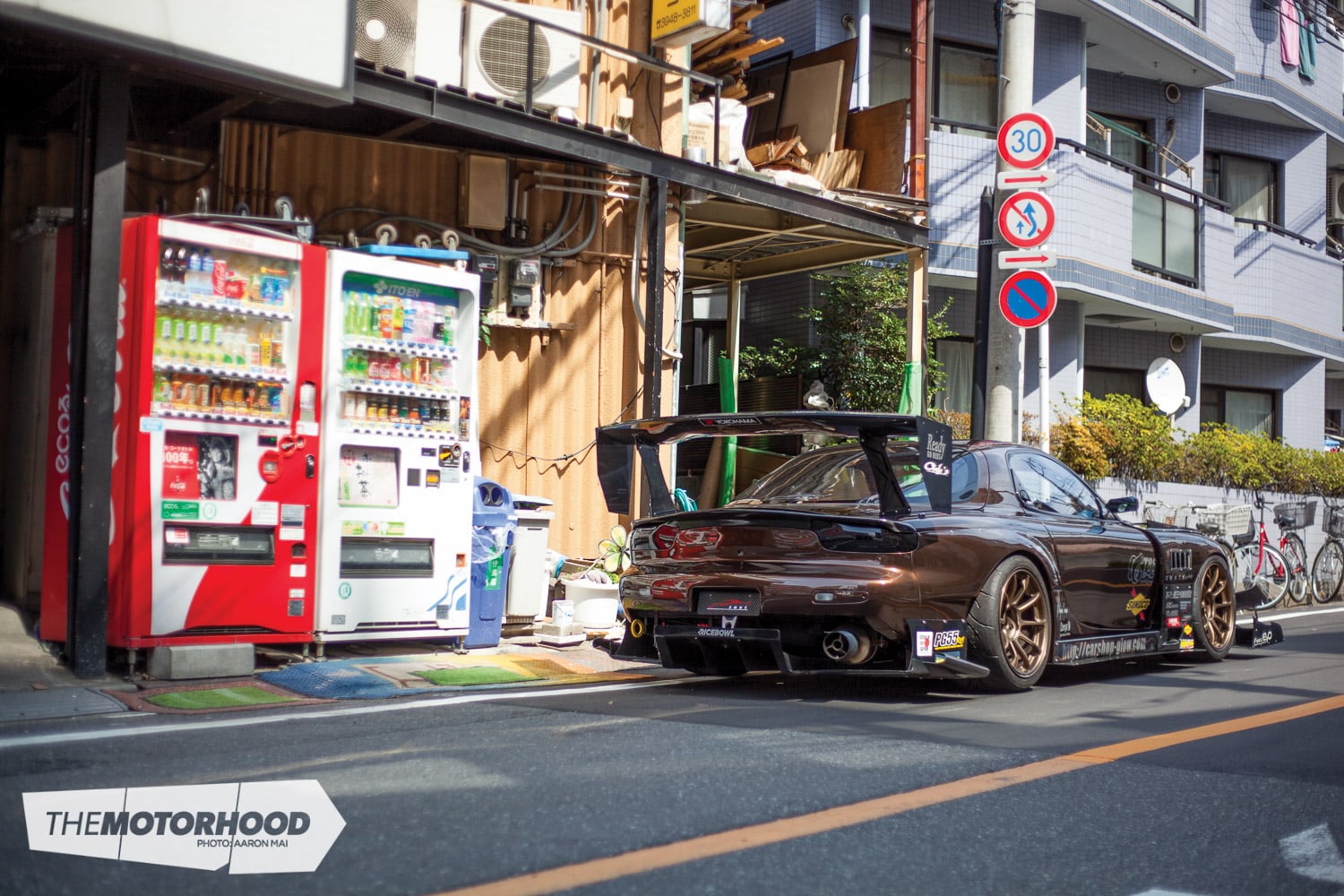
In the time-attack world, there is no such thing as a final result when talking about modifying cars; there is always room to play and tinker, with the only hindrances being money and time. Not surprisingly, more often than not, hard-tuned cars like Hara-san’s are the work of a dedicated tuning shop. This is where Hara breaks the mould, though, as he isn’t exactly what you would call a ‘tuner’. Instead, the bossman of Car Shop Glow delves into custom automotive LED solutions and lighting. A very well-respected player in the automotive industry, a lot of the incredible automotive LED work you spot on the VIP cars throughout Japan and America is the work of Hara-san.
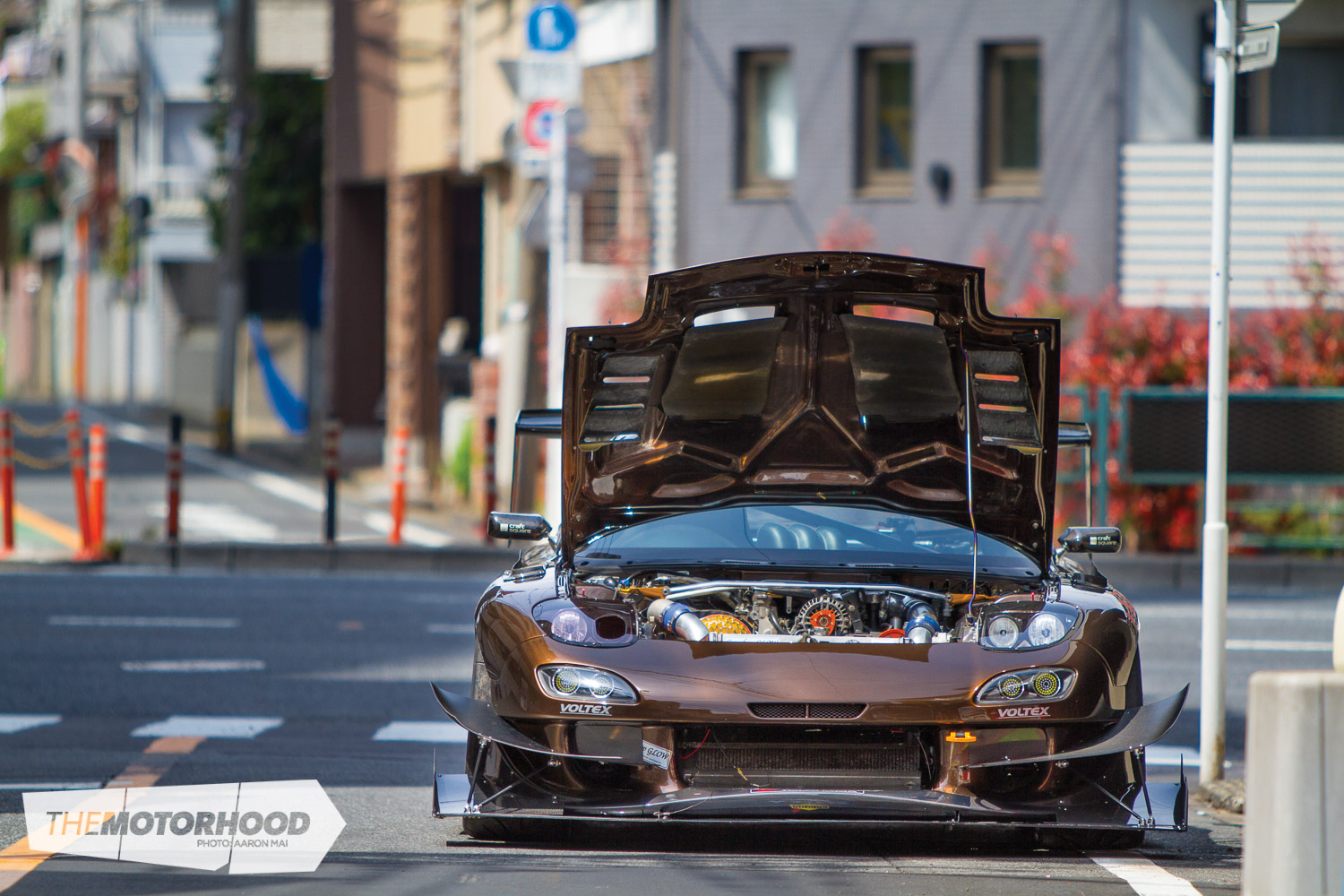
So, for an automotive sparky company, you might be thinking that the pictured car is not what you would expect to be its promotional toy; nevertheless, it’s a pretty serious piece of kit. This RX-7 will pound the pavement at Tsukuba in 56 seconds. Most impressively, though, the hands at the wheel are those of Hara-san. There are no pro drivers who’ve been paid to attain these insane times; it has all been achieved by the boss, who just has a keen interest in racing and, more specifically, time attack.
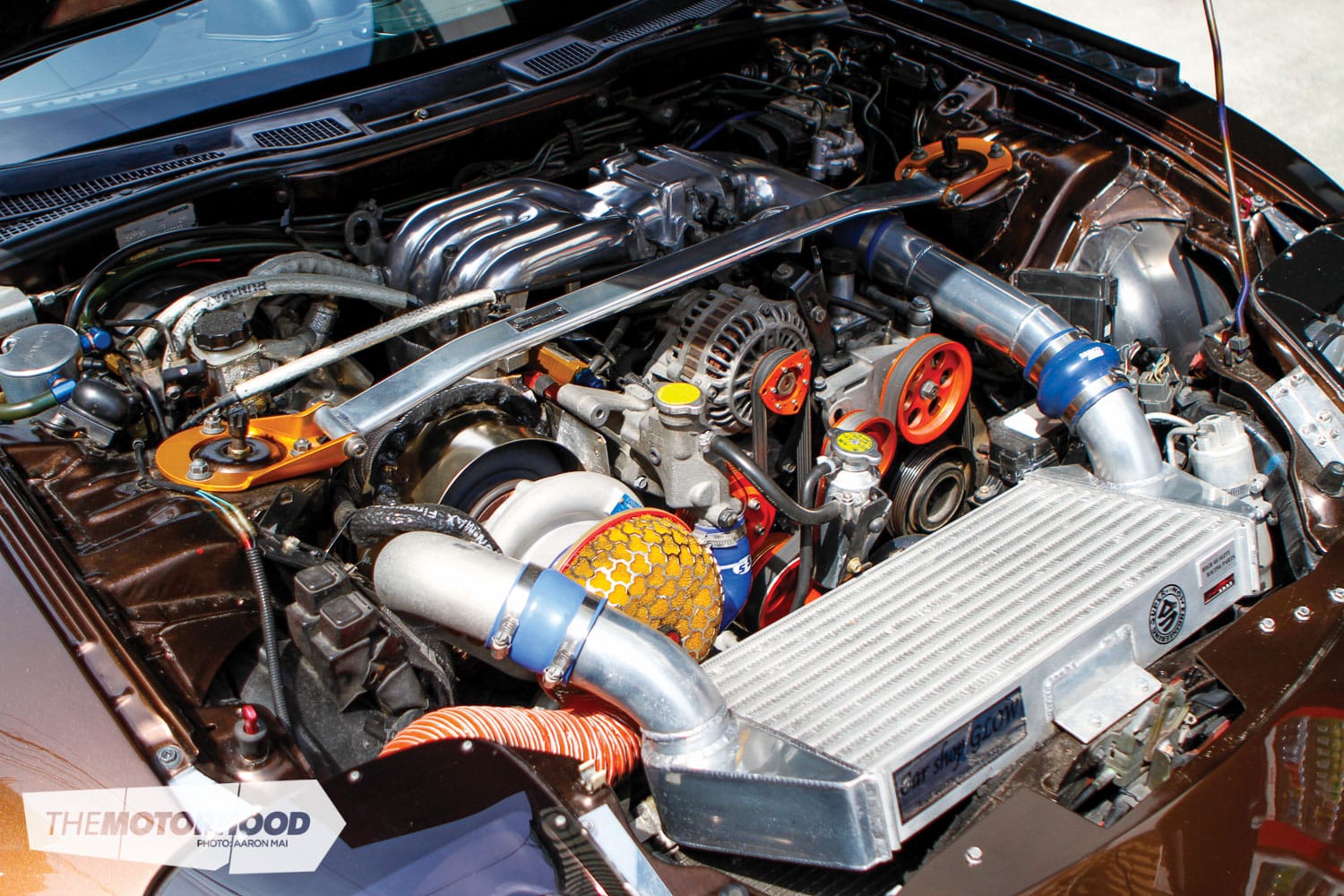
What started out life as a streetable RX-7 has slowly been tweaked more and more, as time has gone on, into this wild aero-equipped FD. In time attack, aero is key, and there is some real science behind the design and modification of this car. Hara-san sticks by one primary rule, as he explained: “You have to displace the same amount of air that you suck in, as smoothly as possible, while using it to your advantage.” Most of that air is hot, so you want it nowhere near wheels and brakes; rather, you want it to go directly up and over the top of the body. Taking a look at the bonnet gives you an idea of what he is talking about: louvered top and side outlets pump the hot air out and over the top, and judging by the number of holes, there must be a lot of it.
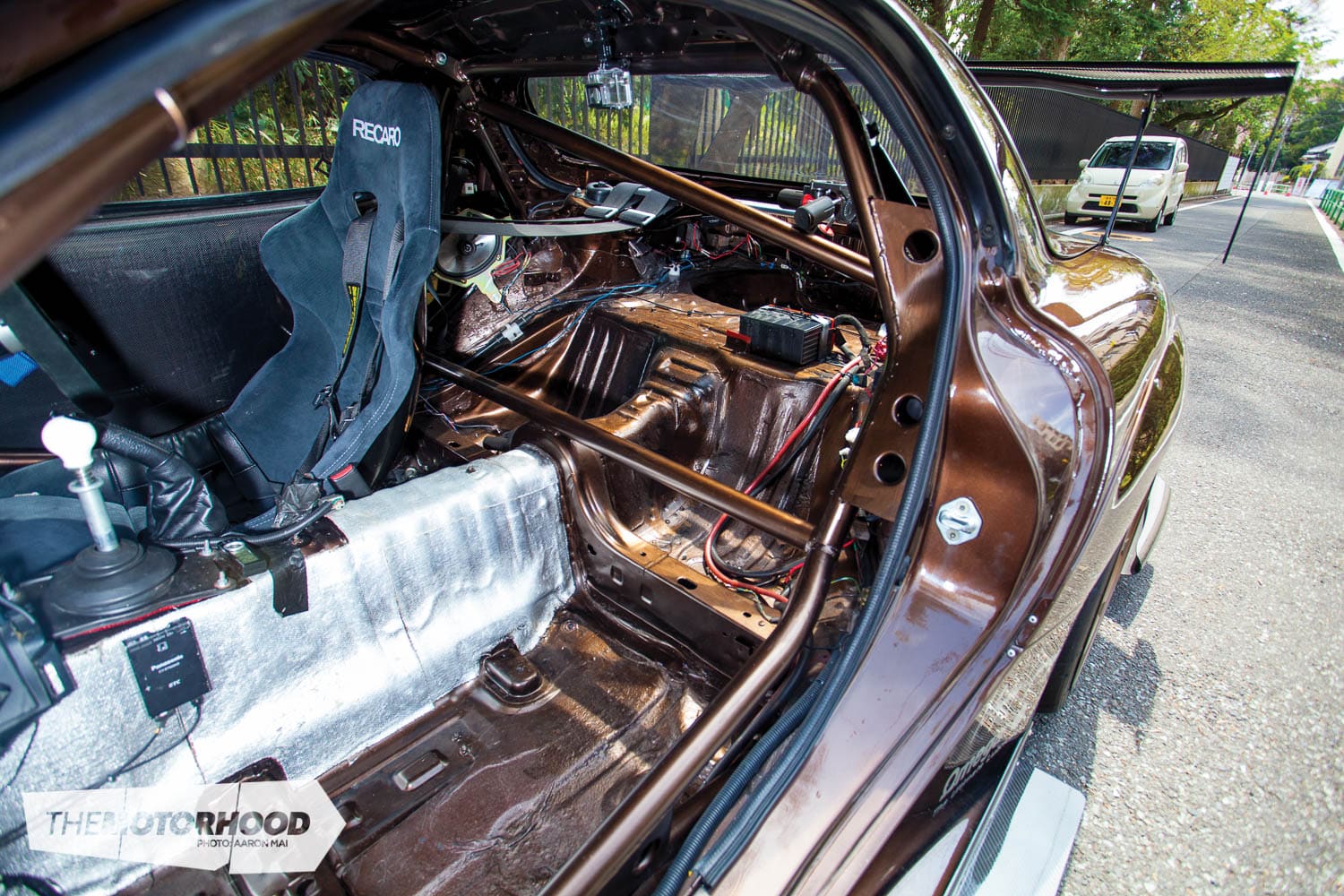
The base aero is unquestionably RE Amemiya, yet a hefty arsenal of additions gives this RX-7 some serious stance. The front splitter is capped at each end, and some serious canards are hinged in place to ensure minimum flex, while an RE Amemiya rear diffuser with two Voltex generators is responsible for rear-end airflow. Perched on the boot lid is a custom Car Shop Glow carbon wing with low-slung side canards.
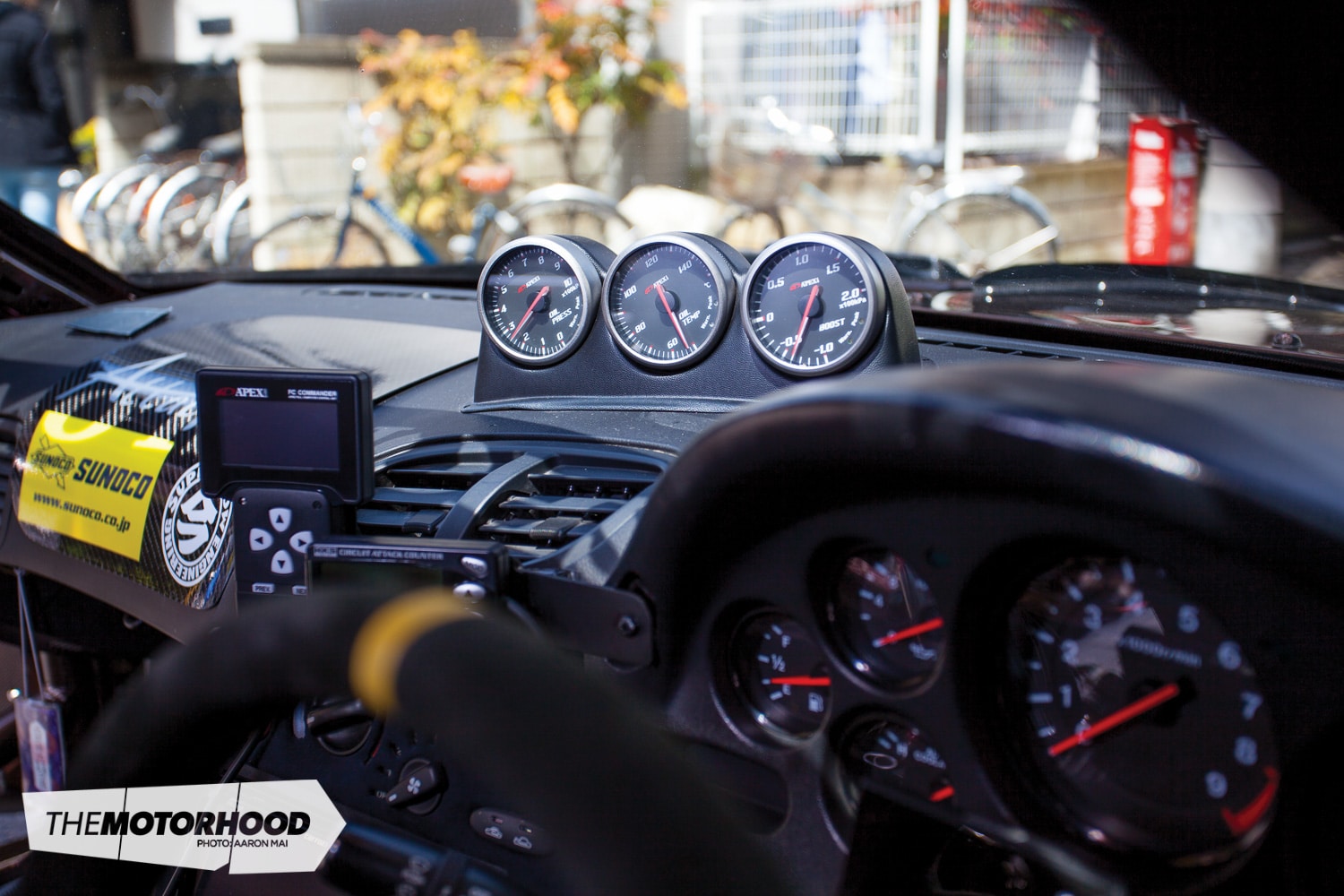
Hara-san is quite proud of his ability to create wet carbon parts, and it shows throughout the body lines of the RX-7, with its smatterings of carbon additions. However, one of the most striking things about the FD’s body isn’t the crazy winged additions but the colour. Sitting in the bright morning sunshine, the bronze hue with a serious dose of metal flake sparkled, unlike any colour I had ever seen before.
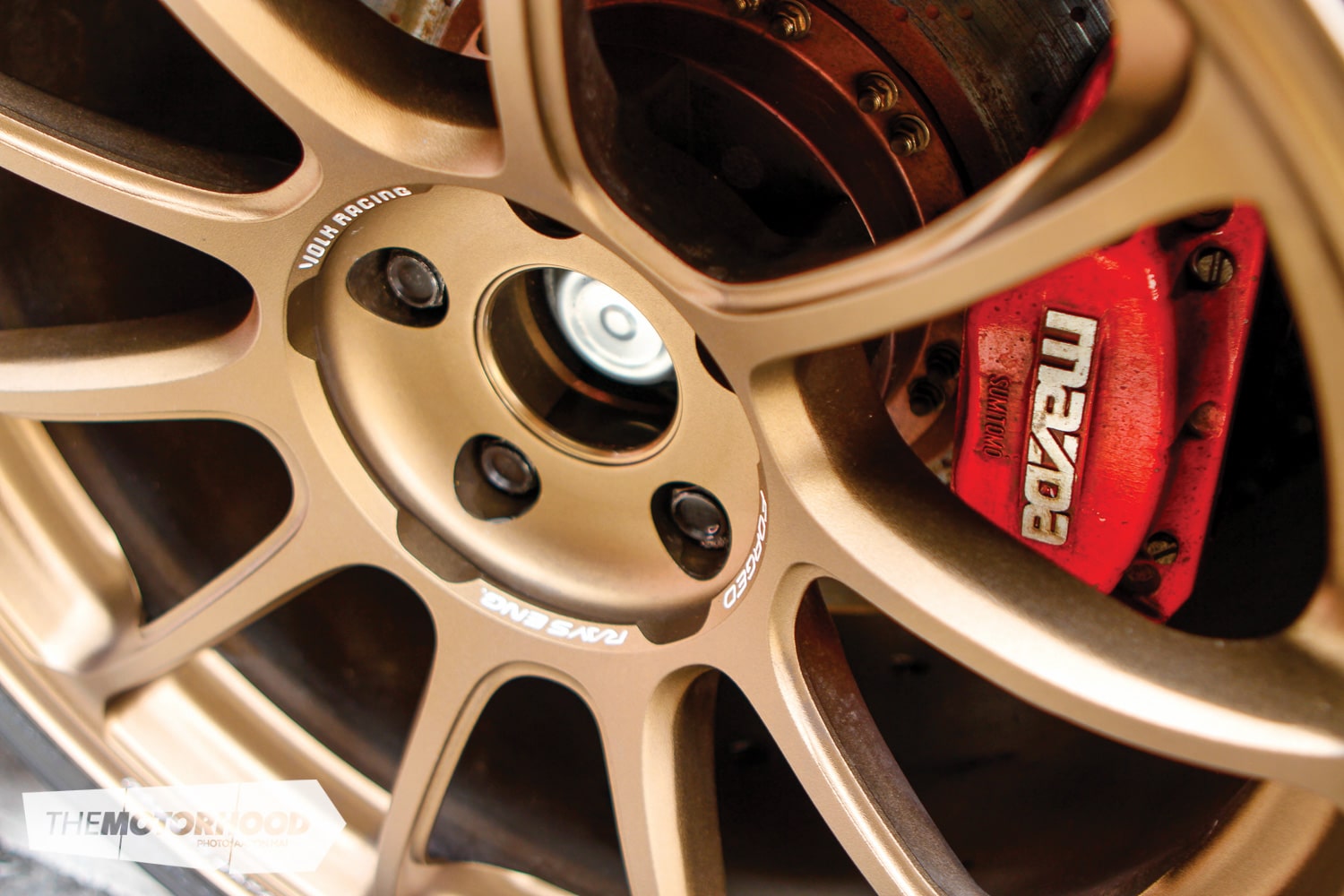
Complementing the gorgeous body lines are RAYS ZE40s in 18×10.5-inch (+15) and 18×11-inch (+15), all wrapped up in Yokohama Advan A050 295/30R18 rubber. To keep the RX-7 stuck firmly on the tarmac, Hara-san has equipped it with Aragosta coilovers with Hyperco 16.1kg springs, both front, and rear. I was surprised when I looked through the wheels at the stoppers to find that the factory brake calipers are still present, although the pads and rotors have been swapped out for PFC items. You would be hard-pressed to pedal any other sports car around Tsukuba in 56 seconds with relatively factory brakes all round.
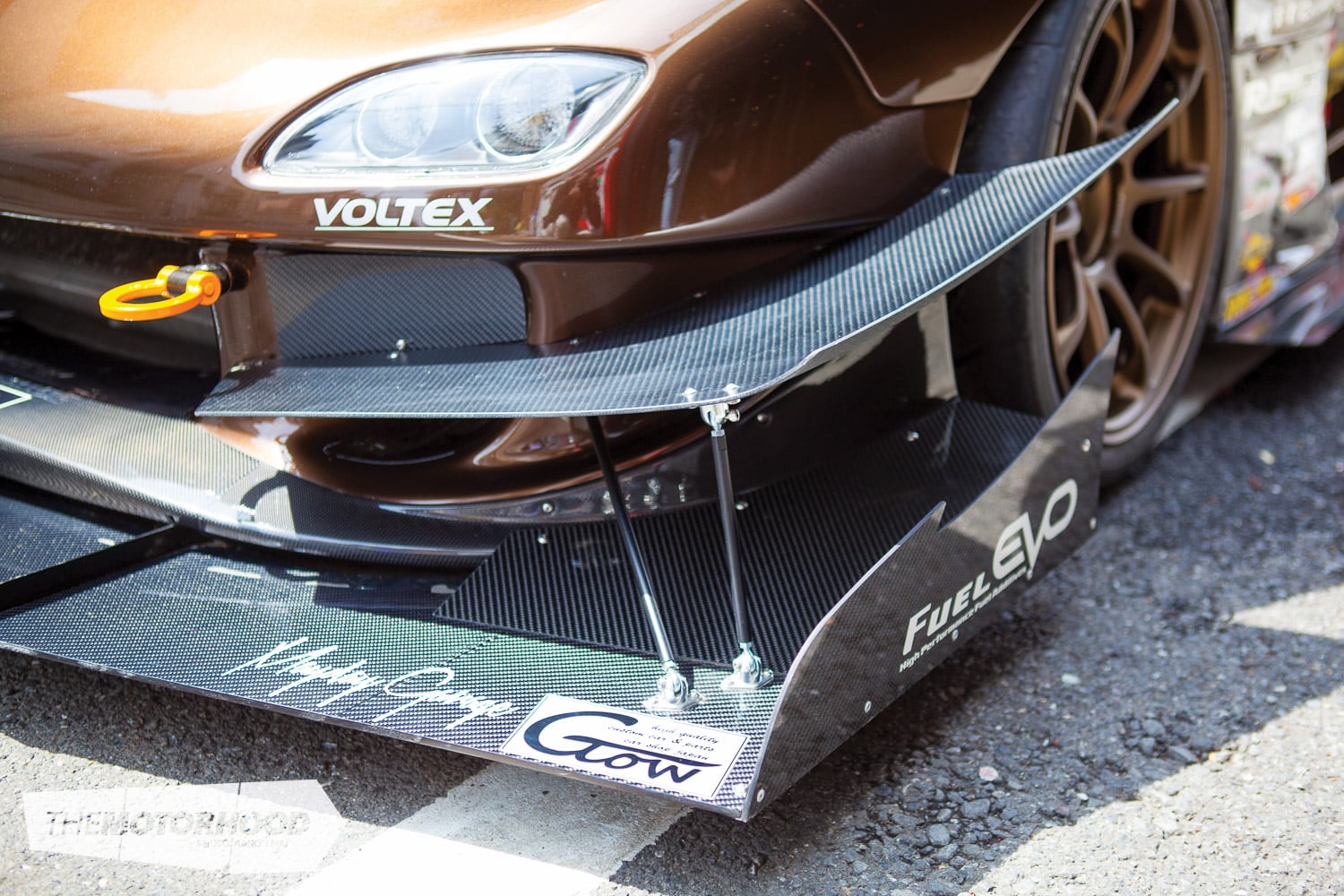
Hara has spared no expense on the presentation of the RX-7, and I was sure that the engine would impress me just as much as the rest of the car. As he lifted the bonnet, I wasn’t disappointed. Having entrusted the engine work to Zest Racing, the result is an angry bridge-ported 13B pumping out 395kW (530hp). He wanted to ensure that the engine would provide the delivery and power, which are of utmost importance in time attack racing, and yet retain a very usable torque curve, peaking at 6900rpm with 490Nm. The power delivery comes courtesy of a giant Trust T88-34D turbine, and, to ensure that the fast-spooling and responsive nature of the engine are maintained, a V-mount setup for the intercooler with straight, short piping was installed up front.
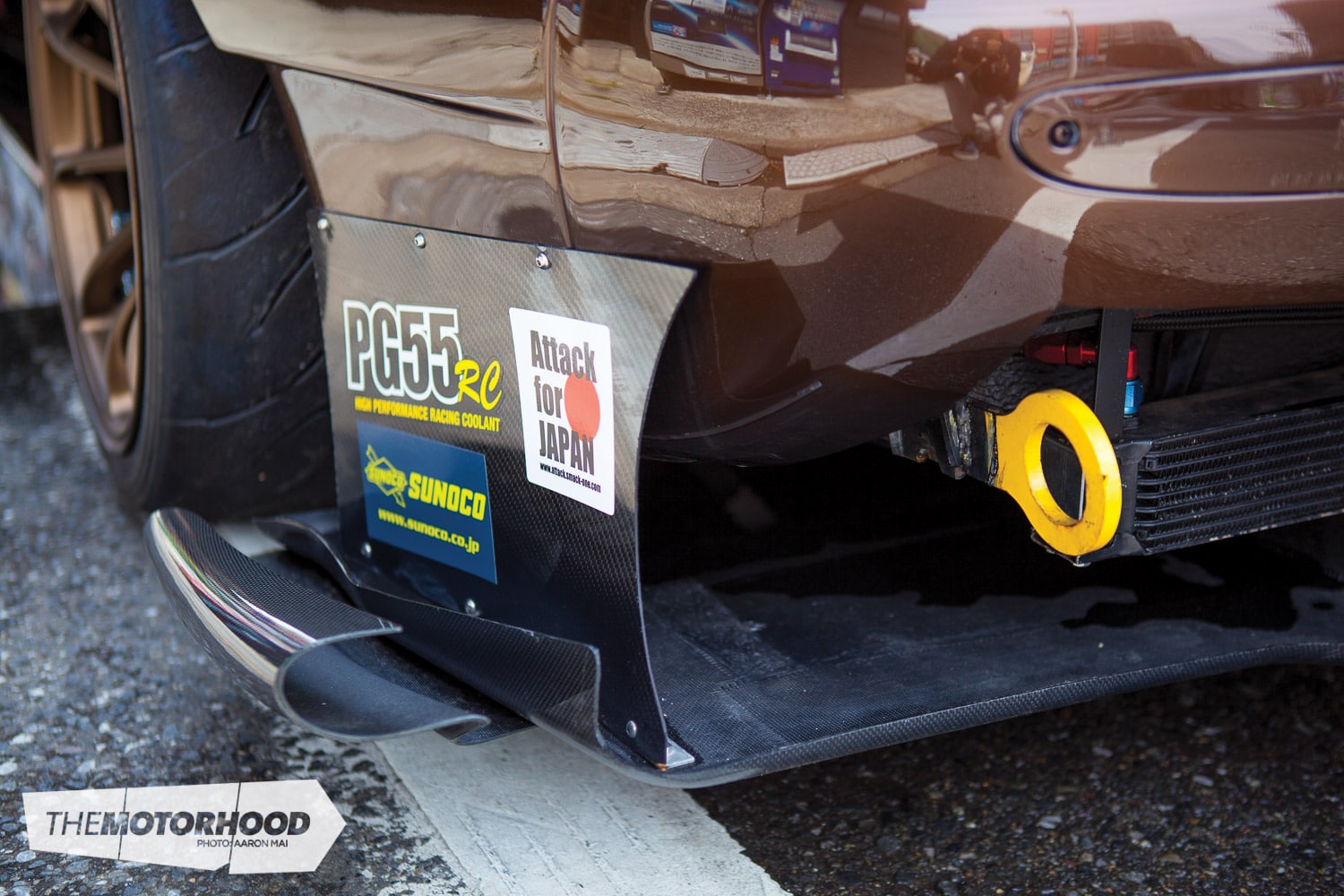
This is all mated up to an HKS six-speed dogbox, Active Traction Service (ATS) twin-plate carbon clutch, and a Mazdaspeed two-way LSD Pisto-spec rear end. When Hara-san turned the key and the RX-7 barked into life, a custom straight-through titanium exhaust gave it a super crisp, raspy pulse. The exhaust was built with a silencer that is much longer than normal to ensure that it had plenty of clearance from the bumper and diffuser.
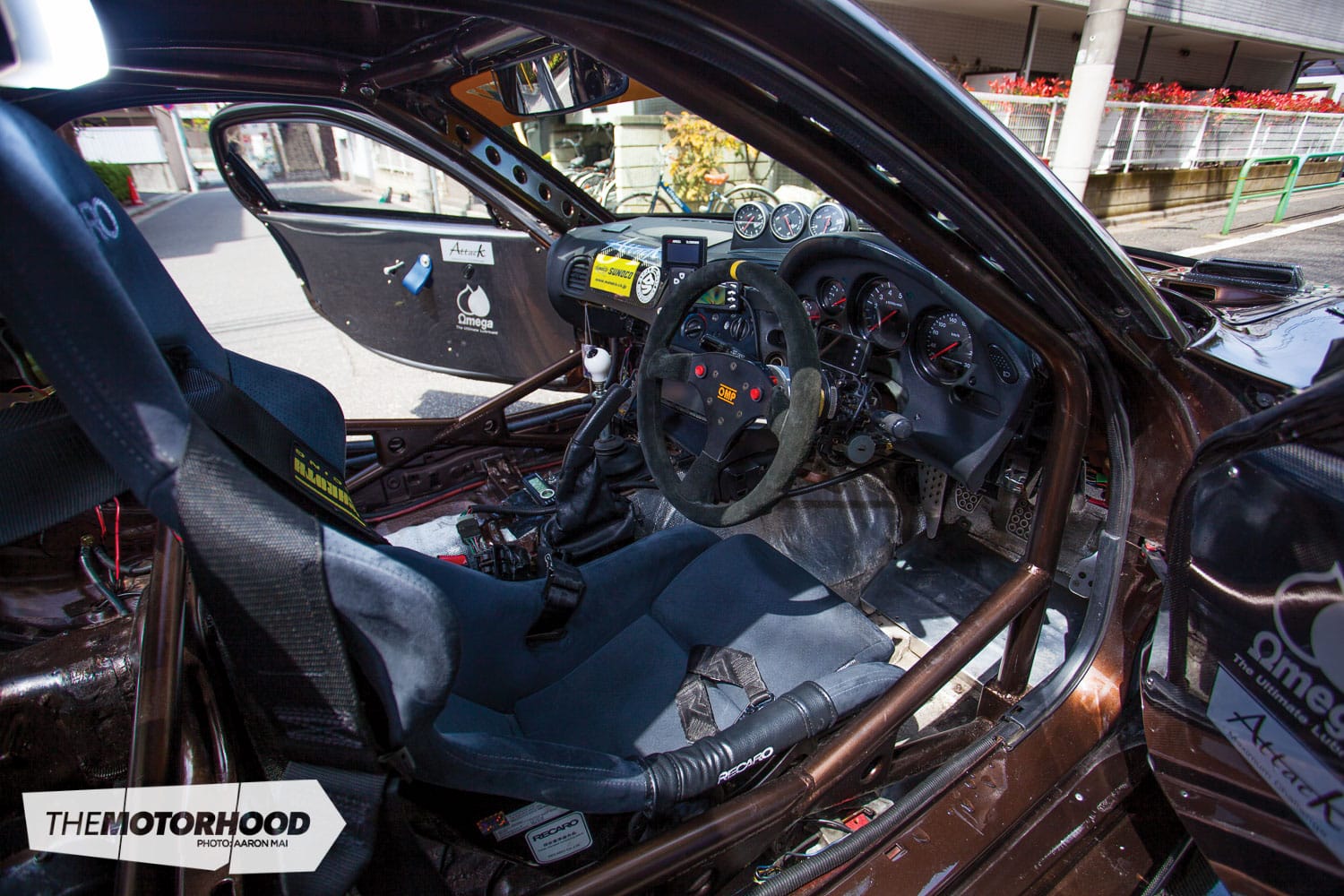
Last but not least was the interior. Usually on purpose-built race cars, you expect the interior to be not quite as pristine as the rest of the car — after all, usually the only person who spends much time in there is the driver, so this is one place where function trumps form every single time. However, Hara-san isn’t just any other driver. Thus, this is one of the cleaner cockpits I have had the pleasure of shooting. Cocooning the interior is an extensive custom cage that extends rearwards past the driver and is joined up to the rear strut towers. The rest of the cage is welded to the chassis, and boxed and gusseted up in different areas for additional rigidity and strength to keep stiffness at the top of the priority list.
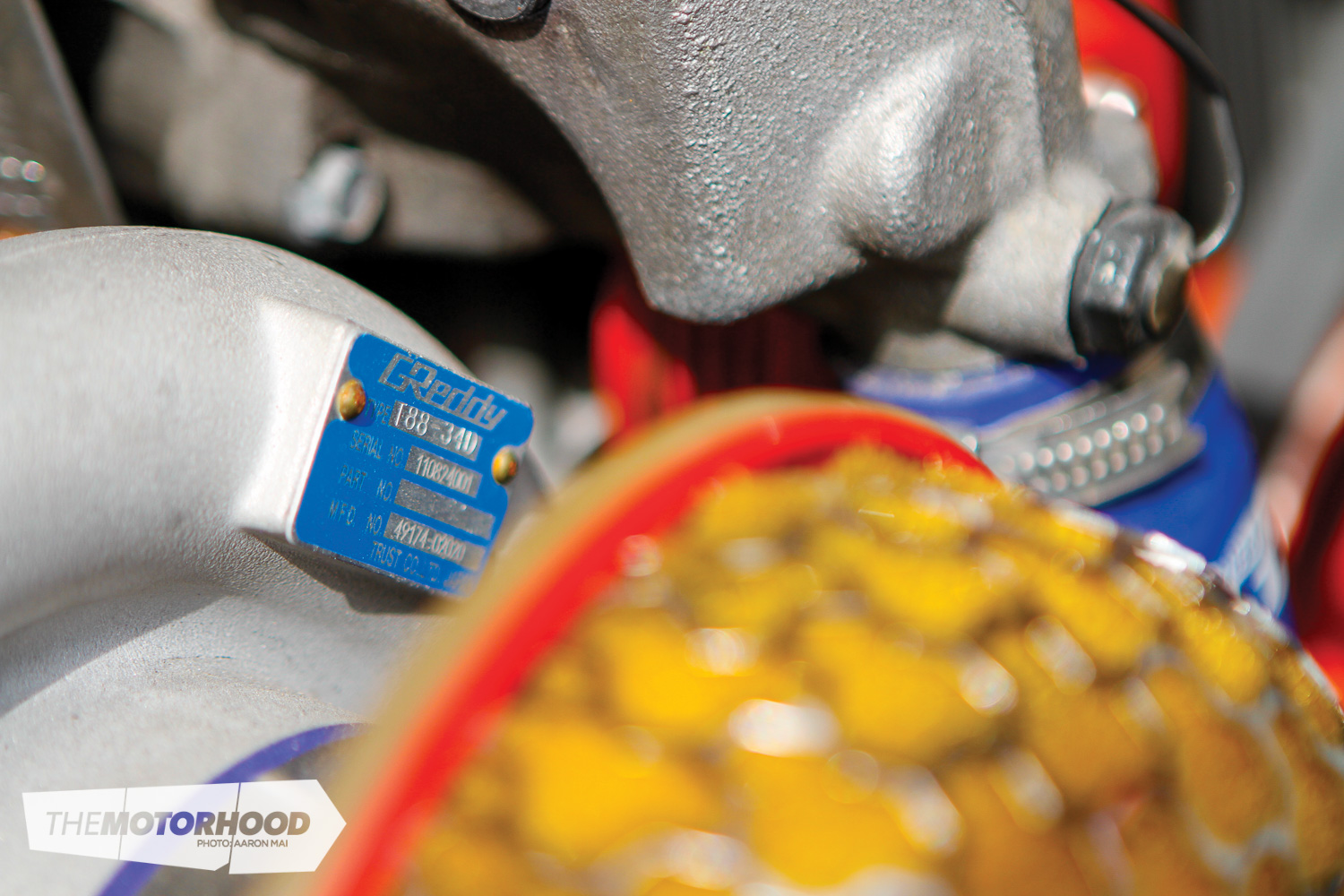
The door cards have been replaced with carbon ones, while the rest of the cockpit has been stripped bare except for the main dash and centre stack. Hara-san has added a few extras within arm’s reach, such as an HKS boost controller, three A’PEXi gauges, and an HKS Circuit Attack Counter lap timer. Oddly enough, this car still retains its car navigation system, and I even spied the Electronic Toll Collection (ETC) card-reader system for when it ran on the highways and through toll gates. Behind the wheel is a Recaro TS-G bucket seat and Schroth Racing harness to keep the driver firmly held in place while they’re throwing the car around the tight twists and turns of Tsukuba Circuit. Looking around from the driver’s seat, you have everything you need and nothing you don’t.
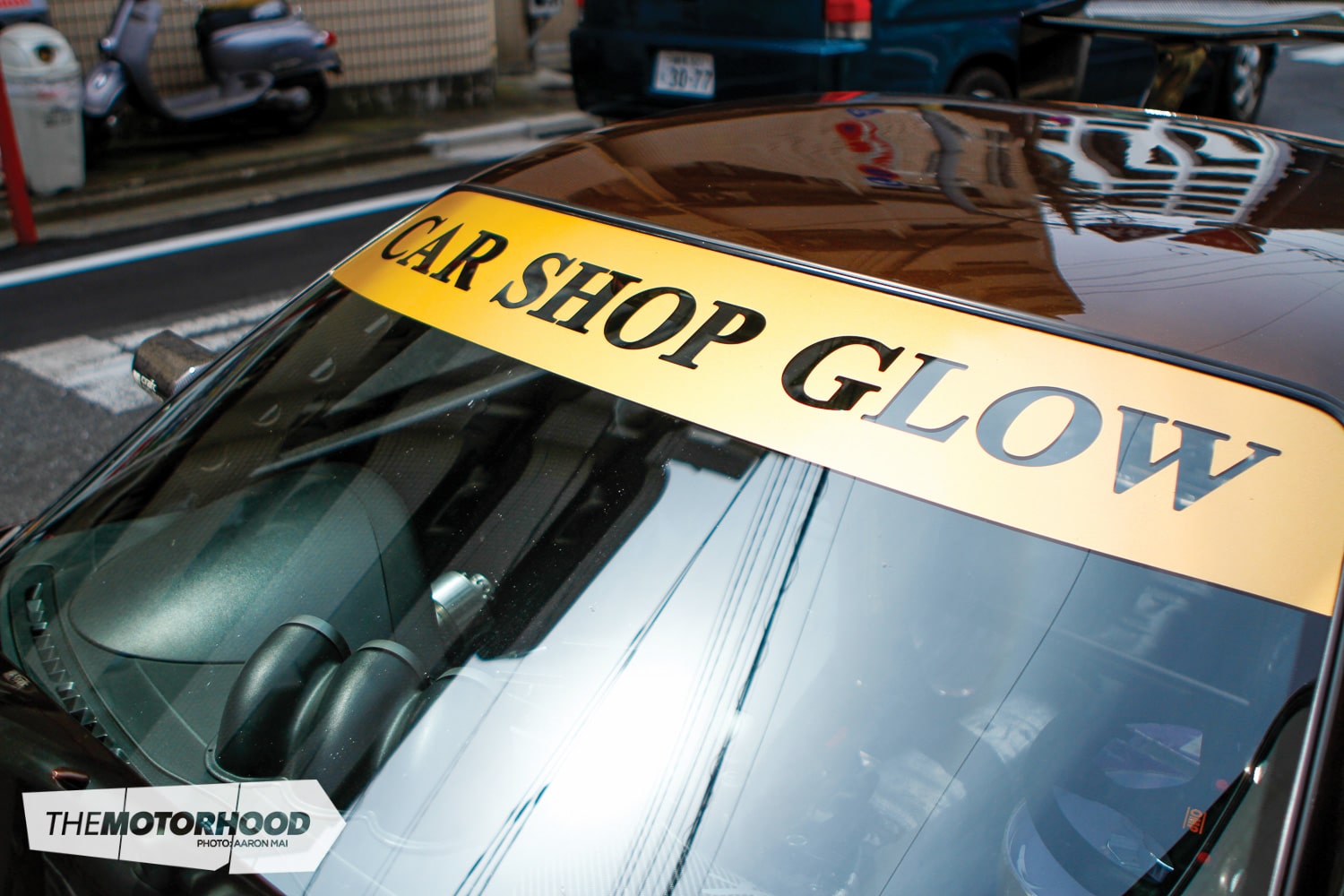
This RX-7 is, without a doubt one of the most beautiful time-attack Wankels in Japan, and, considering that it is not campaigned by a team with hired-hands behind the wheel, Hara-san’s achievements become all the more incredible. While time attack is still relatively small within Japan, individuals like Yukimitsu Hara show us what true dedication and passion look like.
Mazda RX-7 (FD3S)
- Engine: Mazda 13B, 1300cc, twin-rotor
- Block: Zest Racing bridgeported plates, 8.5:1 S6 rotors, diamond-like carbon–coated (DLC) three-piece apex seals
- Intake: Custom V-mounted intercooler, HKS pod filter
- Exhaust: Zest 90mm titanium
- Turbo: Trust T88-34D, Trust turbo manifold
- Wastegate: Trust
- Fuel: Sard 1000cc injectors, Sard fuel rail
- Ignition: Factory
- ECU: HKS F-Con V Pro
- Cooling: V-mounted radiator
- Extra: Alloy pulley kit, alloy catch-can, heat sleeving, titanium bonnet stay
Driveline
- Gearbox: HKS six-speed sequential
- Clutch: ATS carbon twin-plate
- Flywheel: ATS
- Diff: Modified Mazdaspeed two-way limited-slip
Support
- Struts: Aragosta coilovers, Hyperco Sprint 16.1kg/mm springs front and rear
- Brakes: (F) factory calipers, PFC rotors, PFC brake pads; (R) PFC brake pads
Shoes
- Wheels: (F) Rays Volk Racing ZE40 18×10.5-inch (+15), (R) RAYS Volk RACING ZE40 18×11-inch (+15)
- Tyres: Yokohama Advan 295/30R18
Exterior
- Paint: Custom metallic bronze flake
- Enhancements: RE Amemiya GT AD full kit; custom widened over-fenders; Car Shop Glow carbon aero lips, spoilers, and canards; Car Shop Glow carbon skirts; Car Shop Glow carbon vents; Car Shop Glow LED tail lights; recessed headlight conversion with intake
Interior
- Seats: FIA Recaro TS-G, Schroth Racing harness
- Steering wheel: OMP
- Instrumentation: A’PEXi Power FC Commander, A’PEXi gauges, HKS Circuit Attack Counter, HKS boost controller
- Extra: Extensive roll cage
- Power: 395kW (530hp),
This article originally featured in NZ Performance Car Issue No. 233. You can pick up a print copy or a digital copy of the magazine below:
